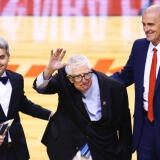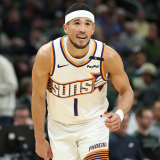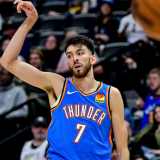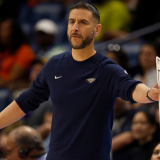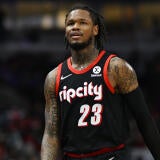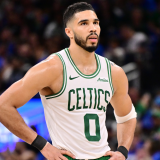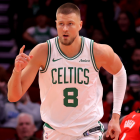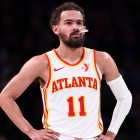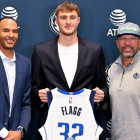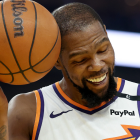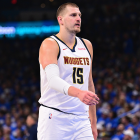Jerry West made greatest trade in NBA history, and in the process, redefined roster-building for decades
West landed Kobe Bryant and Shaquille O'Neal in one fell swoop
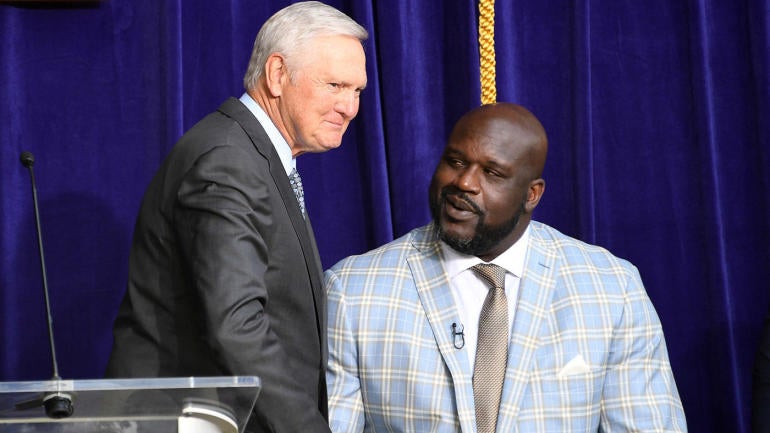
The first dynasty that Jerry West was a part of was a pretty slow burn. The Los Angeles Lakers were fairly directionless after his retirement as a player in 1974. They started the turnaround by landing Kareem Abdul-Jabbar in 1975. They spent the next several years slowly adding the surrounding pieces it would take to win a title. A Jamaal Wilkes here, a Norm Nixon there. The dynasty only really took shape in 1979, when a draft pick gained from the 1976 free agency loss of Gail Goodrich turned into Magic Johnson. Unsurprisingly, this is how dynasties tend to form. It's an incremental process of addition most of the time.
West, who died Wednesday at age 86, didn't officially take over as general manager of the Lakers until 1982. But he proved to be a stellar caretaker of the dynasty that had already begun. Key additions like James Worthy and Byron Scott helped West add three championships to the two credited to Bill Sharman, but when the time came for him to build his own dynasty from scratch, he decided a four-year build was a bit slow for his tastes. So, in 1996, West made the greatest trade in NBA history, and in the process, effectively built the turn of the century's defining team in a single stroke.
It started, as so many great Hollywood basketball stories do, with a dose of Lakers exceptionalism. That's the only real explanation for breaking up a 53-win team, which is where the 1995-96 Lakers fell. It was the best season the Lakers had posted since Johnson's retirement, but it was also a far cry from the highs of the Johnson era. Those Lakers lost in the first round. West saw a path back to the top of the mountain. It wasn't exactly well-worn in the mid-90s.
NBA free agency was relatively new in 1996. The league's first unrestricted free agent, Tom Chambers, had only moved from Seattle to Phoenix eight years prior. In the years that followed, it served mostly as a path for fringe additions. The rules of the cap at the time encouraged that. The NBA had no max contracts at the time, and teams were free to go above the salary cap to retain their own players through Bird Rights. This effectively meant that external teams were severely limited in what they could offer external players in free agency, but incumbent teams were not. Unsurprisingly, stars didn't really move through free agency through the early 90s.
The 1996 class was different. Stars were everywhere. Reggie Miller. Allan Houston. Dikembe Mutombo. Juwan Howard. Alonzo Mourning. But West had his eyes on the biggest star of them all, both literally and figuratively: Shaquille O'Neal. The problem was that these cap conditions made generating an offer that could realistically steal a player of O'Neal's caliber away almost impossible. The Magic helped their case by bungling O'Neal's free agency in just about every way, from low-ball offers to insulting newspaper polls, but the Lakers still had plenty of work to do. In one cap-clearing move, the Lakers generated around $3.6 million in space by sending rotation players and spot starters Anthony Peeler and George Lynch to the then-Vancouver Grizzlies. That wasn't going to cut it.
As the Lakers plotted their pursuit of O'Neal, West scouted the top prospects in June's 1996 NBA Draft. On the surface, this seemed like a back-burner issue. Those 53 wins the Lakers had earned during the 1995-96 season granted them the No. 24 overall pick. They would use that pick on Derek Fisher, a key player in the dynasty we're currently setting up, but not exactly one of its pillars. There was one prospect in the 1996 class who could be, though, even if the Lakers didn't have a pick to take him with.
In early June of 1996, West watched a high-schooler named Kobe Bryant work out at the Inglewood YMCA. "It's very simple to sum up," Ryan West, Jerry's son and an NBA scout, told ESPN in 2021. "Greatest workout I've ever seen." Everyone who saw Bryant work out 28 years ago swore he was the best prospect in the class, and one of the best they'd ever seen, but high-schoolers were still a novelty to the NBA. Kevin Garnett had just gone No. 5 overall a year earlier, but before that, no player had jumped from high school to the pros since the 1970s. Getting Bryant to fall wasn't much of an issue. He and his team had to convince the then-New Jersey Nets not to take him at No. 8, but otherwise, he wasn't tracking toward becoming a top pick.
So West formed a plan. He would offer starting center Vlade Divac to every team drafting from No. 2 overall until he found someone who would bite. In doing so, he hoped not only to land a pick to use on Bryant but also to clear both their starting center slot and an extra $4.7 million in cap space. They finally found a taker in the Charlotte Hornets, who were picking at No. 13. In one fell swoop, West landed Bryant and cleared enough cap space to offer O'Neal $120 million over seven years. The big man took it, and the rest is history. The Bryant-O'Neal duo won three championships without a third star. A dynasty was, in essence, built overnight. Just as importantly, the blueprints West drew up in building it immediately became standard operating protocol in the league.
West took a leap when it came to drafting a high schooler in the lottery. Now, teams prioritize youth at the top of the draft every year because it tends to correlate to the upside. Only two high schoolers were picked at all in 1996. In 2004, seven of them went in the first 19 picks. Nowadays, college freshmen dominate the draft scene. Proven or not, a prospect like Bryant never lasts to No. 13 today.
And his bold approach to clearing cap space? That's an annual occurrence now. At the time, the concept of giving away worthwhile players purely for the sake of reallocating their money was so new that West was able to clear the space he needed relatively easily. Now, clearing that sort of space typically costs draft picks. The approach has led to several championships for other teams. The Miami Heat notably cleared enough room in 2010 to sign both LeBron James and Chris Bosh. The president of that Heat team? West's former collaborator Pat Riley.
These strategies may seem common now, but West was always an early adopter when it came to roster-building strategies. The approach he took to building his second Lakers dynasty would come to define NBA roster-building for the decades that followed. No matter how many copycats follow in his footsteps, though, it's hard to imagine any general manager ever landing two Pantheon-caliber players with a single move ever again, though. It was then and remains now the single greatest trade in NBA history.
Looking for more NBA coverage? John Gonzalez, Bill Reiter, Ashley Nicole Moss and special guests dive deep into the league's biggest storylines daily on the Beyond the Arc podcast.
![[object Object] Logo](https://sportshub.cbsistatic.com/i/2020/04/22/e9ceb731-8b3f-4c60-98fe-090ab66a2997/screen-shot-2020-04-22-at-11-04-56-am.png)


